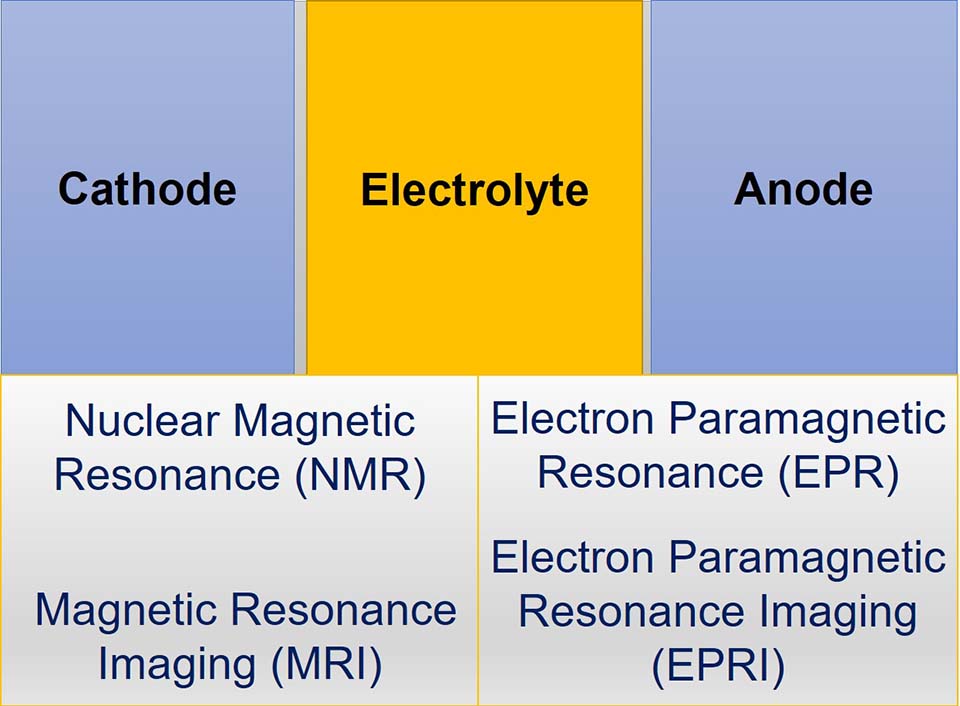

金属离子电池中的磁共振:从核磁共振(NMR)到电子顺磁共振(EPR)
收稿日期: 2021-08-21
修回日期: 2021-09-08
网络出版日期: 2021-09-17
版权
Magnetic Resonance in Metal-Ion Batteries: From NMR (Nuclear Magnetic Resonance) to EPR (Electron Paramagnetic Resonance)
Received date: 2021-08-21
Revised date: 2021-09-08
Online published: 2021-09-17
Copyright
胡炳文 , 李超 , 耿福山 , 沈明 . 金属离子电池中的磁共振:从核磁共振(NMR)到电子顺磁共振(EPR)[J]. 电化学, 2022 , 28(2) : 2108421 . DOI: 10.13208/j.electrochem.210842
Metal-ion batteries have changed our quotidian lives. The research on the electrode materials for metal-ion battery is the key to improve the performance of the battery. Therefore, understanding the structure-performance relationship of the electrode materials can help to improve the energy density and power density of the materials. Magnetic resonance, including nuclear magnetic resonance (NMR) and electron paramagnetic resonance (EPR), has been continuously improved during the past three decades, and has gradually become one of the important technologies to study the structure-performance relationship of electrode materials. This paper summarizes the progress of magnetic resonance research from our group on several interesting electrode materials and demonstrates the important role of NMR and EPR in the study of electrode materials. This article will help to grasp the important value of magnetic resonance technology for battery research, which will promote the further development of advance magnetic resonance technology.

Key words: solid-state NMR; EPR; batteries; cathode materials
/
| 〈 |
|
〉 |